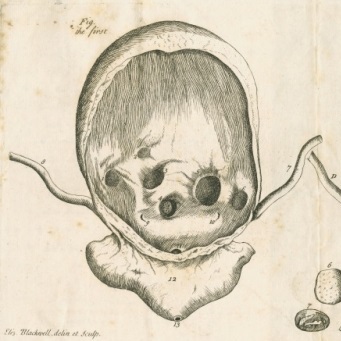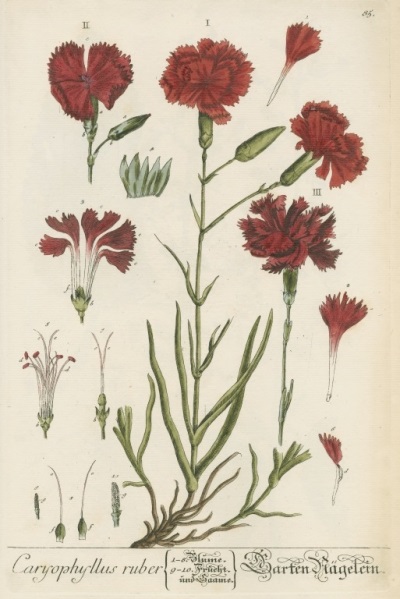The early Royal Society appears to have been curiously fascinated with bladder-stones; there are numerous reports of unusually large calculi, as they were also known, being shown in meetings.

Poor Mr Gardiner’s bladder was to be the subject of a great deal of curiosity and investigation over the course of several years. It features prominently in the Letters & Papers series which I’ve been working through in the Royal Society archive recently. These are the original drafts and translations of papers communicated to the Society from 1740 to around 1800, many of which subsequently found their way into the Philosophical Transactions. Amongst these I came across a series of documents relating to patent remedies for curing bladder-stones, extraordinarily painful concretions which were typically dealt with surgically in the period, by cutting into the bladder and physically removing them.
The early Royal Society appears to have been curiously fascinated with bladder-stones; there are numerous reports of unusually large calculi, as they were also known, being shown in meetings. The surgery was invasive and, because it was performed without anaesthetic, agonising; the young Samuel Pepys was a martyr to bladder-stones and underwent successful surgery to have them removed in 1658. Pepys himself doesn’t say what this was like – perhaps mercifully, 1658 falls outside the period covered by his diary, but his biographer, Claire Tomalin, supplies an eye-watering account of the procedure based on contemporary surgical manuals.
The operation was usually performed at home, since the patient would need plenty of time to recover and it was dangerous to move him. The pain and danger it entailed led to considerable interest in alternatives to surgery, and a Mrs Joanna Stephens offered a patent remedy that she claimed would dissolve the stone without the need for surgical intervention. Specifically she offered in 1738 to make the recipe publicly available in exchange for a reward of £5000, and a parliamentary committee was set up to supervise a clinical trial. Fellows of the Royal Society were heavily involved in the trials and subsequent debates. Four patients were examined before and after a course of Mrs Stephens’ treatment; all reported relief of their symptoms and Mrs Stephens duly claimed her prize in 1740.
The efficacy of the treatment continued to be hotly contested after Mrs Stephens herself fades from the historical record. Edward Nourse, a Fellow of the Society and a surgeon at Bart’s Hospital, wrote to the Society in January 1742, reporting that he’d examined one of the guinea-pigs – a Mr Gardiner – before, during and after his treatment, and indeed after his death. Nourse’s letter apparently accompanied Mr Gardiner’s actual bladder, which had been removed in the presence of witnesses after he died earlier that month. Nourse had examined Gardiner in December 1738 and immediately found a stone in his bladder. He doesn’t say where this happened, but the next examination took place in startlingly public fashion after the patient had begun to take Mrs Stephens’s medicine.
Locating a bladder-stone was itself a fairly invasive procedure, since it involved the insertion of a steel rod into the bladder via the urethra. Almost a year later, Nourse reports running into him by chance at Child’s coffee-house, where the luckless Gardiner had his genitals probed again, by Nourse and a number of other physicians and surgeons who happened to be present. Child’s had become a notable haunt for eighteenth-century medical men and appears – startlingly, to modern sensibilities – to have been used informally as a consulting-room. Some of them also used it as a correspondence address – the same series of papers that includes Nourse’s letter in the Royal Society archive also contains a few letters to James Jurin, a former Secretary to the Society and editor of the Phil Trans, addressed to him at Child’s (and this isn’t the only recorded instance of Royal Society Fellows carrying on their scientific work in the coffee-house: in November 1680 Robert Hooke and Edward Tyson dissected a porpoise at Garraway’s, publishing the results the following year).
The Society continued to gather information about the efficacy of the Stephens remedy over the next several years, which they continued to publish at intervals. Although the medical establishment seems to have been divided on the question, most of the material gathered by the Society inclines to scepticism. This may have been reinforced by Gardiner’s bladder, which was found to contain six holes. Whether these reflected a pre-existing condition or had actually been caused by Mrs Stephens’ remedy the Fellows were unwilling to say definitively; but they certainly made the bladder itself public.

Two illustrations by Elizabeth Blackwell showing front and back views of the bladder of the late Mr Gardiner.
Philosophical Transactions vol. 42, 1742-43, pp.11-14.
Royal Society Picture Library image RS.10395 © The Royal Society
It was engraved and printed as an illustration to Nourse’s letter in the Phil Trans, by Elizabeth Blackwell, who applied her considerable talents as an artist to rescue her husband Alexander from debtor’s prison, where he had been shut up after the failure of his printing business. She is a remarkable figure in the early history of science: her illustrated herbal, featuring her own hand-coloured engravings of 500 medicinal plants, successfully rescued the family from debt. She was well-known to the Fellows of the Royal Society, and her illustration for Nourse’s report may well be the earliest substantive contribution by a woman to the Philosophical Transactions.

Caryophyllus ruber, by Elizabeth Blackwell.
Plate 85 from ‘Herbarium Blackwellianum’, vol.1 (Nuremberg, 1750).
Royal Society Picture Library image RS.9469 © The Royal Society
The Royal Society’s move here is typical, and might suggest a few things about the impact of the medical and allied professions on publishing research-driven medicine. Though many medical men were members of the Royal Society, relations between the Society and the professional medical associations of early modern London weren’t always easy. Part of this was due to distrust of innovation on the part of some medical practitioners, but it was also due to the Society’s nervousness about appearing to endorse particular practices in any discipline. Medicine in the Phil Trans and in meetings of the Society tended towards reports of the curious and extraordinary – towards the singular, or at any rate the specific instance, rather than the general remedy; and towards investigation and description rather than therapy. In a public debate over the efficacy of a particular cure, the Society was happy to gather evidence but not to adopt a position, and might not have been willing to go even that far if the medical professions had been united in opposition to it.
